Nuala Ní Chonchúir's Blog, page 50
July 31, 2013
CALUM KERR - GUEST POST
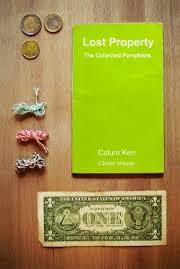
I am thrilled today to welcome Calum Kerr to celebrate the publication of his new collection of flash-fictions, Lost Property. Calum is a writer, editor, lecturer and director of National Flash-Fiction Day in the UK. He lives in Southampton with his wife - the writer, Kath Kerr - their son and a menagerie of animals. Calum is guest-posting today on flash openings and endings, a subject dear to my own heart.
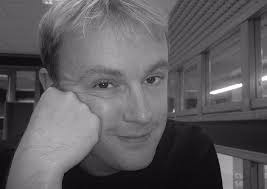 Calum KerrTake it away, Mr Kerr:
Calum KerrTake it away, Mr Kerr:Alpha and Omega
Calum Kerr
In the beginning was the word, and the word was ‘flash’.
So, I’ve been asked to finish off my blog tour, by writing about beginnings and endings. Do you have any idea how hard it is to start a piece like that? With everyone analysing it? Anyway, I think what I came up with might have got your attention.
But is it as good as ‘It was the day my grandmother exploded’? Or, ‘Call me Ishmael’? Or, ‘You beg like a Bible verse: taut, memorable, ghost-written’?
Don’t recognise the last one? Feel like you should? Well, don’t be ashamed. It’s not from a famous novel. It’s from a flash-fiction written by Amy Mackelden and published in the recent edition of FlashFlood for National Flash-Fiction Day here. When I was reading through the submissions, it was an opening line which stopped me in my tracks. It made me think, made me appreciate the concision of the writing, and most importantly it made me want to read on.
After all, that’s what a good beginning does. It forces us to read the next sentence because we want answers to the questions posed in the first. If it’s a good second sentence, it simply asks more questions, as does the third, and before you know it: you’re hooked.
The literary theorist, Roland Barthes, was a ‘structuralist’ who spent some time categorising the different types of sentences and phrases we find in fiction (in S/Z, Roland Barthes, Blackwell, 2002). He discovered five separate types, which he called ‘codes’. One was presenting information, one was using cultural references, and one was posing questions. This he called the ‘hermeneutic code’. And the purpose of this code was not simply to construct phrases which pose questions to the reader, but to pose questions that can only be answered from within the text. Thus, when we read a sentence like Amy’s, we immediately want to know who the narrator is, who they are speaking about, why they’re begging, and why they beg in such a way. Four questions with one sentence: no wonder I wanted to read on.
The hermeneutic code is absolutely crucial to flash-fiction. When I have tried to define what flash-fiction actually is, I’ve talked about the way it uses language and the way it tells a story by implication and connotation. This can occur because of the use of the hermeneutic code. By writing sentences which pose questions and ask the reader to do some work, often for the entirety of a story (bar the ending, usually, but more on that later) you are asking them to find answers which only exist within the story, but answers which are often not provided, only hinted at, or described by an absence.
This, I believe, is what makes the best flash-fictions work. They hook the reader, they pull them along on a line of questions, and the reader needs to decode the language, the setting, their knowledge of stories, and the few ‘clues’ in the story, in order to discover what has happened and what it all means. And for those reasons, it leads to a very engaging, immersive and memorable type of story.
Of course, in a story like that, the ending is going to be crucial. In many cases, it’s the one place where the questions stop, and some answers are provided. This, I believe, is what has led to the definition of flash-fiction which compares it to a joke: a feed and then a punch-line; and to comments about ‘twists in the tale’.
A good flash is not simply a joke, and a twist in the tale which is nothing more than a random event, a deus ex machina, satisfies no-one. No, the ending of a flash-fiction should be the moment of clarification, the point at which the tangled snarl of questions is pulled taut and the straight line from opening to ending is finally seen.
Now, this is not the only way to write a flash, but some structural analysis of flash-fictions shows that many are written in this way, making good use of the possibilities of the hermeneutic code, then resolving the questions at the end. There is something eminently satisfying about it. It’s not a model for writing flash, but it’s fascinating to see it in action.
Let me finish off by giving you an example from my own work which I like to think works in this way.
The Blackbird
Calum Kerr
Her bag was packed when I arrived home. She was still dressed in her work clothes, her shoes on her feet. The kitchen had been cleaned. It’s not you, it’s me, I thought. It’s always me. It always was me and it always will be.But it wasn’t, it was her.She couldn’t stay, she told me. It wasn’t working, she told me. It had run its natural course, she told me.Stay, I requested. Please stay, I pleaded. Please, please stay, I begged.It’s not you it’s me, she said. I’m not the same person I was, she said. I need something more, she said.Why? I asked. Tell me why, I asked. Please, forget the words you are meant to say at times like this and tell me why; tell me the truth, I asked.I’ll call you, she said, as she pulled on her coat. Just give it a few days, she said as she picked up her bag. Just ... don’t ring me, she said as she closed the door.I sat in the clean, empty kitchen, and heard a blackbird outside, singing into the silence, saying all the things that hadn’t been said, couldn’t have been said, have never been said, but in a language I couldn’t understand.
[Originally published in Lost Property.]
Readers you can buy Lost Property here or direct from the publisher CinderHouse. The individual e-pamphlets which make up the book are also available via Dead Ink here.
Published on July 31, 2013 01:13
July 30, 2013
Dromineer Lit Fest Writing Comps - poetry & flash
The Dromineer Literary Festival Writing Competition is open for entries. There are two categories: Poetry and Flash Fiction. The Judges are Jean O'Brien for Poetry and John MacKenna for Flash Fiction.
Entry fee for poems is €5 for the first poem, plus €3 per additional title. Entry fee for flash fiction is €10 for each entry.
Prizes (in each comp.): 1st: €500, 2nd: €350 and 3rd: €150.
Deadline: 30th August 2013.
Further details: Dromineer Literary Festival
Entry fee for poems is €5 for the first poem, plus €3 per additional title. Entry fee for flash fiction is €10 for each entry.
Prizes (in each comp.): 1st: €500, 2nd: €350 and 3rd: €150.
Deadline: 30th August 2013.
Further details: Dromineer Literary Festival
Published on July 30, 2013 00:00
July 29, 2013
ARENA REVIEW - GERRY STEMBRIDGE
I'll be on Arena tonight on RTÉ Radio 1 reviewing Gerard Stembridge's rollicking 1970s novel The Effect of Her. Between 7pm and 8pm.
Published on July 29, 2013 01:00
July 28, 2013
The Sunday Times EFG Short Story Award 2014
The Sunday Times EFG Private Bank Short Story Award 2014 is now open for entries. The judges are looking for an outstanding English-language story of 6,000 words or under from a fiction author from anywhere in the world who has been published in the UK or Ireland. The winner will receive £30,000, and the five shortlisted writers will each receive £1,000 as well as having their work published online. A longlist will be announced in February.T&Cs and entry form here.
Published on July 28, 2013 03:13
July 26, 2013
GALWAY READING TONIGHT, BELFAST PICS, MOTHER AMERICA MOBI
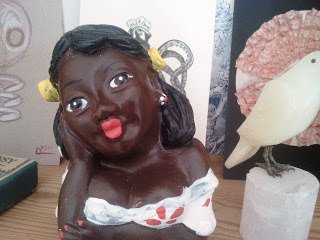 Namoredeira from BrazilI am reading tonight with Seamus Scanlon at the Dominican Hall, The Claddagh, Galway as part of the Artistic Atlas celebrations. I don't read often in Galway so that's kind of fun. 6pm, admission free. Please come!
Namoredeira from BrazilI am reading tonight with Seamus Scanlon at the Dominican Hall, The Claddagh, Galway as part of the Artistic Atlas celebrations. I don't read often in Galway so that's kind of fun. 6pm, admission free. Please come!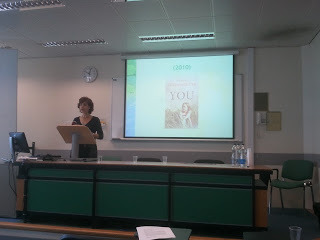 Marisol Morales LadrónBelfast was fab, I must say. Again, I took very few pics (too busy walking, eating and enjoying the sights and shops.) I loved Marisol Morales Ladrón's eco-critical look at my novel YOU, at the IASIL Conference at Queen's University. She was spot-on in her assessment of the importance of the river in the book. It is fascinating to hear your work talked about by academics - they go to the heart of it so much more than critics. Gracias, Marisol :)
Marisol Morales LadrónBelfast was fab, I must say. Again, I took very few pics (too busy walking, eating and enjoying the sights and shops.) I loved Marisol Morales Ladrón's eco-critical look at my novel YOU, at the IASIL Conference at Queen's University. She was spot-on in her assessment of the importance of the river in the book. It is fascinating to hear your work talked about by academics - they go to the heart of it so much more than critics. Gracias, Marisol :)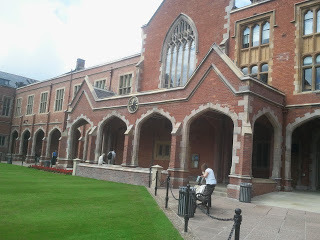 Queen's Uni, BelfastThis particular conference is like the queen of Irish Studies conferences so there were lots of the lovely people there whom I met in Brazil last August, including Laura Izarra who brought me the namoredeira above, the statue you see in so many windows in the north of Brazil. Sweet :)
Queen's Uni, BelfastThis particular conference is like the queen of Irish Studies conferences so there were lots of the lovely people there whom I met in Brazil last August, including Laura Izarra who brought me the namoredeira above, the statue you see in so many windows in the north of Brazil. Sweet :)In other news my short story collection Mother America is now available as a mobi file at New Island's page on Small Epic for £4.99 (about €5.80) for all you e-reader readers.
Published on July 26, 2013 03:09
July 23, 2013
ARTISTIC ATLAS LAUNCH, READINGS AND TRIPS
 Atlas inventor Liam Duffy - pages from the book behind himSometimes I get lazy and refuse to carry my proper camera to events. I bring my little camera which is light but fairly mediocre, it has to be said. Anyhoo, I was lazy yesterday so herewith a few mediocre pics from the
Artistic Atlas of Galway
launch last night in the Dominican Hall in the Claddagh. It was great - Sarah Clancy gave a rousing speech on the importance of the arts to Galway. She reminded me of why I first came to live in in Galway by saying it has always been one of those places where it feels like anything might happen and often does.
Atlas inventor Liam Duffy - pages from the book behind himSometimes I get lazy and refuse to carry my proper camera to events. I bring my little camera which is light but fairly mediocre, it has to be said. Anyhoo, I was lazy yesterday so herewith a few mediocre pics from the
Artistic Atlas of Galway
launch last night in the Dominican Hall in the Claddagh. It was great - Sarah Clancy gave a rousing speech on the importance of the arts to Galway. She reminded me of why I first came to live in in Galway by saying it has always been one of those places where it feels like anything might happen and often does.The Atlas itself is a thing of beauty - my poem is accompanied by a stunning photo of train tracks from John Lawless. All the writers I spoke to were thrilled with the quality of the production.
There were readings, Mexican food, wine and shots. There were writers and a hall chockful of beautiful art (exhib runs all week). All this week writers featured in the Atlas will read at 6pm. Myself and New York based Irish writer Seamus Scanlon read together on Friday at 6pm. The Atlas is for sale at the hall and also online here.
In the meantime I am off to Belfast to hear a paper on my novel YOU from Spanish academic Marisol Morales Ladrón at an Irish Studies Conference. Accompanying me on my trip will be Gerard Stembridge's new novel, The Effect of Her, which I will review on Arena next Monday. I can't wait to get stuck in.
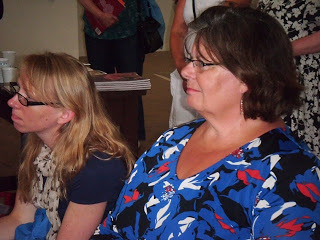 Helen Freeburn and Mary Mullen at the launch
Helen Freeburn and Mary Mullen at the launch
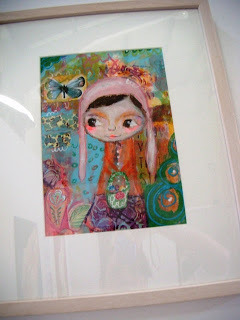 Artwork on exhib by Sylvia Gryczuk
Artwork on exhib by Sylvia Gryczuk
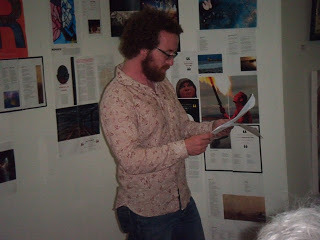 Jimi McDonnell reading
Jimi McDonnell reading
 Sarah Clancy launching the Atlas
Sarah Clancy launching the Atlas
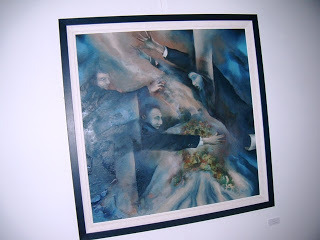 Artwork 'The Chase' by Aran Young
Artwork 'The Chase' by Aran Young
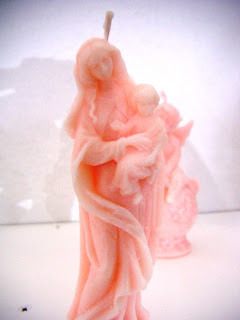 BVM candle
BVM candle
Published on July 23, 2013 10:13
July 21, 2013
ARTISTIC ATLAS OF GALWAY
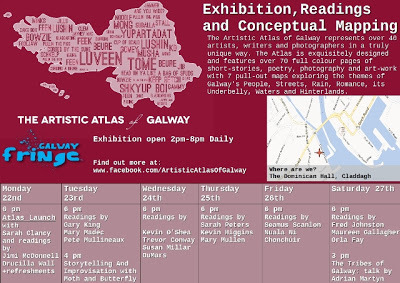
The Artistic Atlas of Galway , the brainchild of Liam Duffy, will be launched tomorrow, Monday the 22nd July at 6pm in the Dominican Hall in the Claddagh. The Atlas features poetry, prose, photography and art from Galway-based and Galway-connected creatives.
It is a gorgeous piece of work and it features, among many others, Mary Mullen, Maureen Gallagher, Doireann Ní Ghríofa, Fred Johnston, Sandra Bunting, Pat Jourdan (as writer and artist) and John Lawless.
Launch: 6pm, Monday 22nd, Dominican Hall, The Claddagh
Exhibition: 2pm to 8pm daily, same venue
Readings: 6pm daily until Saturday 27th, same venue. My reading is on Friday the 26th and I am performing with NY-based Irish writer Seamus Scanlon.
Published on July 21, 2013 07:38
July 19, 2013
10th ANNUAL SEAN Ó FAOLÁIN PRIZE - DEADLINE LOOMS
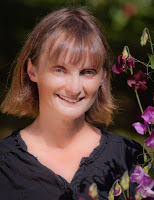 Judge Joyce RussellThere are just 12 days to go to the Seán Ó Faoláin Short Story Prize deadline on July 31st. The prize is ten years in existence this year and is open to all writers. €15 entry fee.
Judge Joyce RussellThere are just 12 days to go to the Seán Ó Faoláin Short Story Prize deadline on July 31st. The prize is ten years in existence this year and is open to all writers. €15 entry fee.Judged once more by former winner Joyce Russell, first prize consists of €2000 (approx $2600/£1700) in cash, publication in Southword, a reading spot at the Cork International Short Story Festival in September, with hotel accommodation and meals provided AND a week at Anam Cara writers' retreat.
Entry details here. Read last year's winning story here. There are also prizes and publishing opportunities for second place and four runners-up.
Published on July 19, 2013 00:00
July 18, 2013
NIAMH BOYCE INTERVIEW
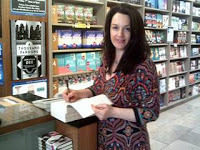 Niamh Boyce
Niamh BoyceI am delighted today to welcome Irish writer and blogger Niamh Boyce to WWR for a chat about The Herbalist, her début novel. A Hennessy XO New Irish Writer of the Year winner, originally from Athy, Co. Kildare, Niamh now lives in Ballylinan, Co. Laois, where she's writing her next novel.
The Irish Times said recently of the book: 'Boyce’s subject matter may be dark, and she treats it with the seriousness it deserves, but she writes with a lightness of touch not often seen in the genre; this is the most entertaining yet substantial historical novel I’ve read since Joseph O’Connor’s Star of the Sea.'
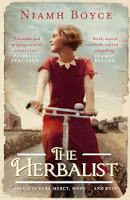
Hi, Niamh, and welcome to WWR.
Your novel The Herbalist is out now in trade paperback and the cover is really gorgeous. As you are also a visual artist, I imagine the cover looking 100% right is very important to you. Talk to me about the cover and how you felt when you first saw it/feel about it now. And are there different covers planned for the paperback and the UK editions?
Delighted to be here, Nuala! And I’m glad you like the cover. I’ll be honest - I’m delighted with the cover now but I wasn’t too fond of it at first. I saw it then on a screen, without detail, and the girls dress was black, not red. Because I paint and love art, I had visualised many possible cover images and had certain expectations regarding ‘the look’ of the book. The publishers asked that I bear with them, and explained how it would appear in the final version, which, as you can see, is beautiful with a matt texture, embossed gold lettering and wonderful attention to detail on both the outside and inside covers. I realise now that the image, as well as fitting well with the story, has a much wider appeal than anything I might have chosen. I’m partial to a slightly gothic aesthetic which might have misled readers as to what genre it was! (And it will be the same cover for the paperback and UK editions.)
The Herbalist is set in rural-ish 1930s Ireland. The men in the novel are somewhat shadowy – apart from the herbalist himself, though he is mysterious. Was it important to you to have women as the main agents of this story?
With regard to women being the main agents of this story – no, it wasn’t a conscious decision made from the outset. Actually in the earliest drafts, Dan was a main character. So the men in the novel are secondary characters in the same way that some of the women like Birdie Chase and Mrs B are secondary characters. Voice was important and I followed the voices instinctively and decided who got main parts on the basis of how many words they gave me (I made a graph!) rather than gender. But gender, voice and silence are of course very much linked. So as my pen crossed the page, I felt as if I was scratching away at silence, that the voices I heard were confiding, telling secrets, crossing over. For example, there was a palpable silence around the tiny newspaper article [that inspired the book], a few sentences really, that eventually led me to write the novel. It told me nothing. And it was a nothing I was ready to dive into. As Rose says in the book – You wouldn't know it but it's my story. You won't find me in the column inches. You won't find me in the newsprint. You'll find me in the gaps, the commas, the full stops - the small dark spaces where one thing led to another. So I was aware, that on the level of voice, I was working against a silence. In reality, the tale of that summer, the summer of The Herbalist, would never have been passed on. So I was conscious of that. And that in turn is connected to shame and to the wider dynamics of power – of class, religion and gender. But for me to consider those issues as I wrote the book, to make a conscious effort to weave them into the narrative would have been death to the fiction, so I didn’t. But it all comes out in the wash as they say…
You write both short and long fiction, as well as poetry. Can we expect a short fiction collection from you anytime soon? A poetry book?
My short story collection is finished. I might play around with the order of the stories but I just need to find the time. I’ve no definite plans for publishing them at the moment. I also have the guts of a poetry collection, but not the whole shebang yet!
How does the long haul of the novel compare to writing short? What are the positive aspects of novel writing for you?
Short fiction is very satisfying to write but with novels, you get to enter a whole world, a world of your own creation and you get to build it at a slower pace, step by step. You get to explore further and in a more winding way. You get to spend ages looking up strange and wonderful things and call it research! You get to change your mind, rewrite, have characters walk in and announce themselves, or walk of in a hissy fit; there’s so much room for the unexpected. It’s exciting.
Oh, I know, I love research.
The voice of Emily sings from the book – she is sassy and funny. How easy does humour come to you as you write?
It comes naturally or not at all, it depends on the character. I’ve never tried to be funny but I think the absolute bald truth of any situation can be hilarious. So if you have an honest character or a young character who speaks as they see, I think that humour is almost unavoidable then. The truth of how we are as people is funny in and of itself.
Who are the women writers who make you think ‘Yes!’ and for what reasons?
As a young woman in the 1990s a trio of poets made me aware that my life, my ordinary, everyday life might be worth writing about, might even be rich with a myth and magic of its own. They were Paula Meehan, Mary Dorcey and Rita Ann Higgins. The title alone of Higgins poetry collection Goddess On The Mervue Bus made me think ‘yes!’ Especially as I rode the Mervue Bus in and out of Galway City with my baby girl on my lap. And she put a community welfare officer in a poem, and she told the truth about power. And Dorcey wrote about mothers and daughters, real women, not some Róisín Dubh or Mother Ireland, or dying swan, or gormless muse. That was new then, or new to me at least!
Angela Carter’s The Bloody Chamber also really spoke to me – it said, ‘never mind all that paring it all back and good clean prose, the short story can be a lush baroque burlesque of prose!’ At the moment I’m enjoying how Tove Jansson writes about women sharing a life and making art. There is something stunning in the calmness of her delivery, the understatement, the lack of ego in her writing.
Writer Sara Crowley tagged a Smash Hits style set of questions to an interview she did with me and I thought it would be a fun way to end with you, Niamh, so here goes:
What’s your favourite biscuit?Toffee Pops rock!
Who is your favourite Sesame Street character? Has to be Oscar- the Heathcliff of Muppets.
Cheese or chocolate? Cheese.
Who is the most famous person you have ever met? I met the song writer Mick Hanly last week in Castlecomer library and he was really lovely.
Whose poster did you have on your teenaged bedroom wall? Paul Young. So unpunk. Don’t know what I was thinking…
Ha ha, me too. I was going to marry Paul Young!!Best milkshake flavour? Strawberry.
Niamh, wishing you all the best with The Herbalist. Readers, you can buy it here and visit Niamh’s blog here for the latest on appearances, reviews etc. Signed copies of The Herbalist are available from Stone House Books in Kilkenny.
Thanks for having me over Nuala, and for the questions, they were thought provoking and good fun.
Published on July 18, 2013 00:00
July 17, 2013
COLUM MCCANN @ GALWAY ARTS FESTIVAL
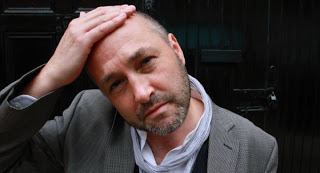 Colum McCann - photo by Nick BradshawI went to hear Colum McCann read at his Galway Arts Festival sell-out event last night, with my friend Órfhlaith Foyle. Colum was - predictably - gracious, interesting, and both a great reader and a great talker.
Colum McCann - photo by Nick BradshawI went to hear Colum McCann read at his Galway Arts Festival sell-out event last night, with my friend Órfhlaith Foyle. Colum was - predictably - gracious, interesting, and both a great reader and a great talker.He read, of course, from his new episodic novel TransAtlantic , which features several different narrative threads over several different time periods which, similar to his last novel, Let the Great World Spin, link and pull together as you read through.
He spoke about the genesis of the novel - it started really with a mild obsession with Frederick Douglass, the social reformer and slave who came to Ireland in 1845, just as the Famine was starting. Colum said that he recognised, in Douglass, a powerful metaphor for Barack Obama.
Colum was, at the time, trying to write a contemporary novel called 13 Ways of Looking, set in New York (where he lives) and centring around surveillance cameras. But he abandoned that in favour of Douglass, because he 'kept coming back' to him. (Anyone who writes fiction knows that feeling). So he tried to write a novel about Douglass but said, 'I constantly failed at it'. How heartening to hear that even Colum McCann doesn't always succeed at his writing projects!
He read several extracts from the novel - some about Frederick Douglass; the passage where Alcock and Brown land in Clifden, after flying the first non-stop transatlantic flight; as well as part of the section on Senator George Mitchell, who brokered the Peace Process in Northern Ireland. In between the readings he spoke to us about writing those parts of the book and what he hoped to achieve. He also told us that the ghosts of Alcock and Brown were in the ballroom of the Meyrick Hotel, where the reading took place, as they came there off the train from Clifden after their flight. A neat coincidence.
Colum talked about that question that writers always get asked, 'What is your book about?' He said that he would like to reply, 'It's about 301 pages.' But, ultimately, he said, 'TransAtlantic is about peace.'
One shouldn't like a novel more after hearing the author talk about it, I feel, but what can you do? Colum McCann talks with such clarity about his work it is hard not to admire TransAtlantic even more after hearing him read from it and discuss it from lots of different angles.
Colum McCann was on a book tour when he heard that Barack Obama had name-checked him, with reference to Frederick Douglass featuring in his novel, at the G8 talks in Northern Ireland recently. He was staying in a hotel and he said, 'I brushed my teeth with Deep Heat that morning.'
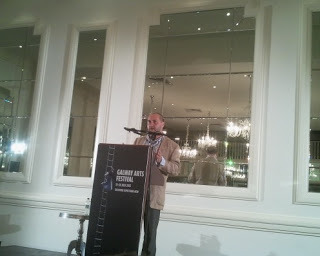 Colum McCann reading at The Meyrick Hotel - camera pic, hence wogeous quality...I have been a McCann fan for years - he writes beautiful sentences and anyone who does that is good with me. I recommend TransAtlantic and I also highly recommend his other books - his short stories are excellent. If you haven't read him, now's as good a time as any.
Colum McCann reading at The Meyrick Hotel - camera pic, hence wogeous quality...I have been a McCann fan for years - he writes beautiful sentences and anyone who does that is good with me. I recommend TransAtlantic and I also highly recommend his other books - his short stories are excellent. If you haven't read him, now's as good a time as any.*
In other news, an interview I did with The Short Review (quite some time ago) about Mother America has now been posted. It is here.
And following on from yesterday's post, it did do me good to get away from the desk. I wrote more words today on the novel than I have been managing of late. Not a huge amount, but enough to keep me pleased and moving doggedly on :)
Published on July 17, 2013 03:15
Nuala Ní Chonchúir's Blog
- Nuala Ní Chonchúir's profile
- 41 followers
Nuala Ní Chonchúir isn't a Goodreads Author
(yet),
but they
do have a blog,
so here are some recent posts imported from
their feed.



